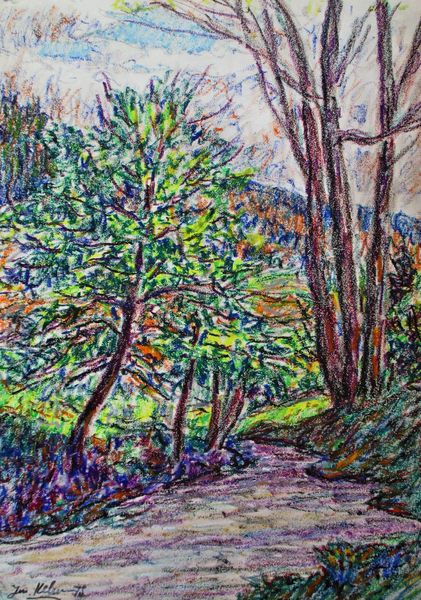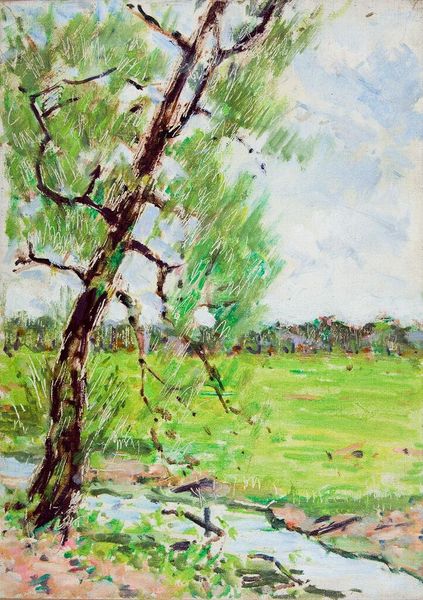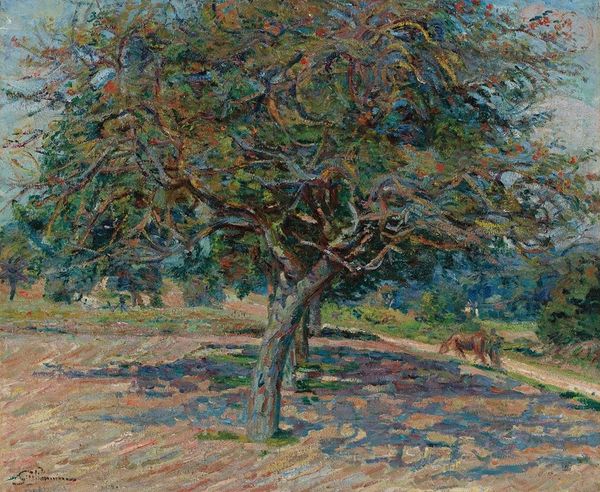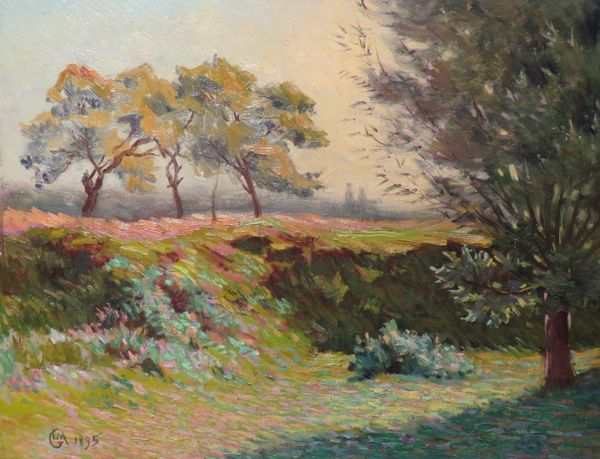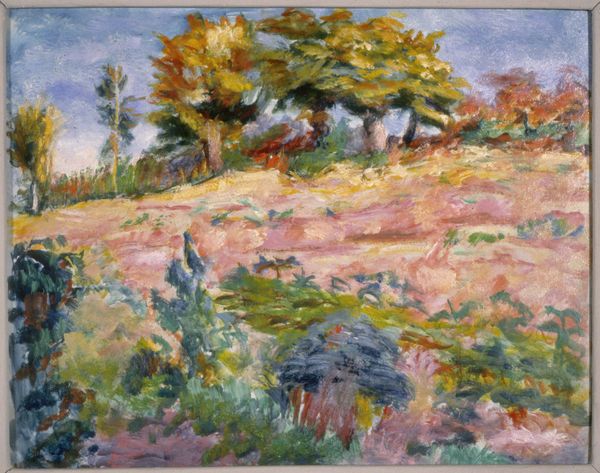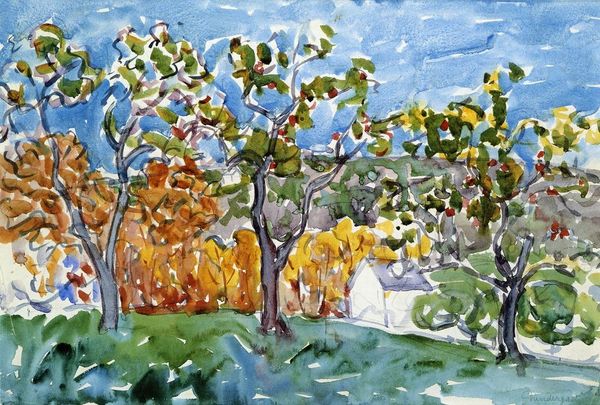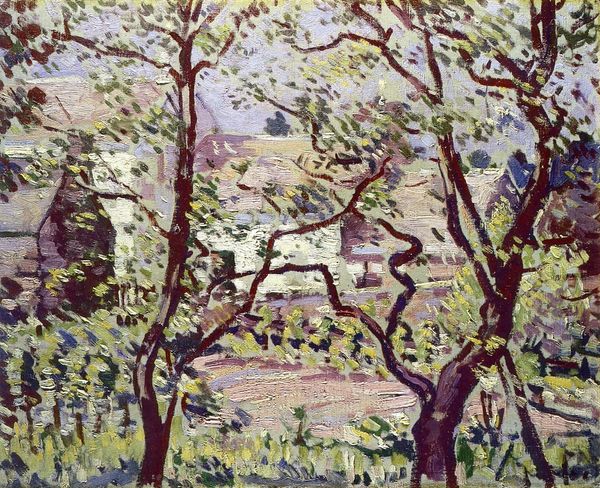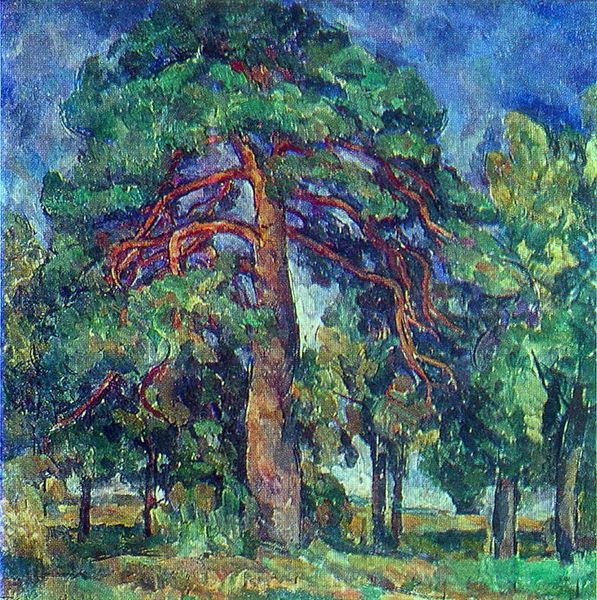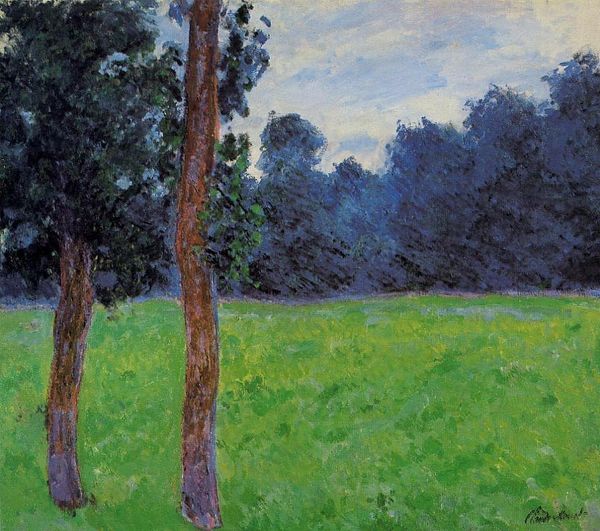
painting, plein-air, impasto, pastel, frottage
#
tree
#
abstract painting
#
painting
#
plein-air
#
landscape
#
impressionist landscape
#
impasto
#
pastel
#
frottage
Copyright: JAROSLAV KELUC,Fair Use
Editor: This is Jaroslav Keluc's "Up Till Spring Day," created in 1974 using pastel and frottage. It feels so raw, so immediate. The strokes are bold and there is this layering effect. I wonder how plein-air affected artists' approach at the time, and what exactly the "political agenda" was here, or the intent, perhaps? Curator: Well, looking at the socio-political climate of 1970s Eastern Europe is essential. Keluc, painting outdoors, adopting impressionistic techniques—was this a form of subtle resistance? How might such an approach challenge the dominant artistic narratives pushed by the state, given its apparent rejection of social realism? Editor: That's fascinating! So even something as seemingly innocuous as a landscape could be a political statement? It's all landscape in the Western understanding though! I wonder, why using pastel specifically? What was it about pastel as a medium that fit the climate and the public expectation and consumption of landscape pieces such as this one? Curator: Exactly! Pastel, unlike oil paint, allowed for speed and immediacy, fitting the need for on-the-spot art making while suggesting fragility, and fleeting moments, subtly undermining the heavy, monumental style often favored by authorities. Now consider how Keluc, by choosing a typical pastoral landscape subject, engages in a discourse about national identity and place within a system seeking to control that narrative. Editor: I hadn't thought of it that way. So the very choice of subject, technique, and location all become ways of participating in a larger cultural conversation, whether intentional or not. Is there anything about Keluc or the public perception of his pieces? Did anyone "see" Keluc's resistance as vividly back in the days? Curator: The key point is to understand how this painting operates within a specific historical framework. It’s less about individual intentions and more about the complex interaction between artistic practice and broader societal power dynamics. We can also wonder if public perceived it in ways other than "simply landscapes"? Editor: It makes me consider what hidden meanings might lie within art that appear apolitical. Thanks! Curator: And it reveals how art never truly exists in a vacuum. Thanks for raising those questions!
Comments
No comments
Be the first to comment and join the conversation on the ultimate creative platform.

